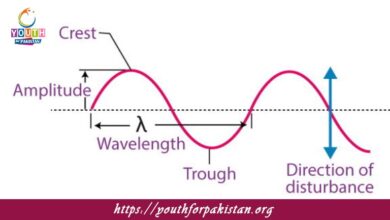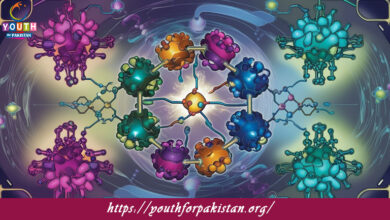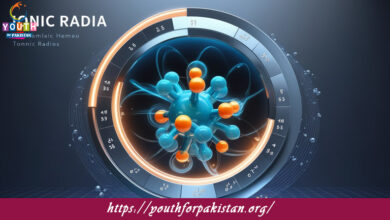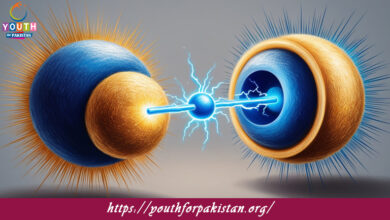Production of ATP MDCAT MCQs with Answers
Welcome to the Production of ATP MDCAT MCQs with Answers. In this post, we have shared Production of ATP Multiple Choice Questions and Answers for PMC MDCAT 2024. Each question in MDCAT Biology offers a chance to enhance your knowledge regarding Production of ATP MCQs in this MDCAT Online Test.
Which process generates the most ATP in cellular respiration?
a) Glycolysis
b) Citric acid cycle
c) Electron transport chain
d) Fermentation
What is the net gain of ATP molecules from glycolysis?
a) 2
b) 4
c) 6
d) 8
During which phase of cellular respiration is ATP synthesized through substrate-level phosphorylation?
a) Glycolysis
b) Citric acid cycle
c) Electron transport chain
d) Both a and b
What is the primary role of ATP synthase in cellular respiration?
a) To break down glucose
b) To transport electrons
c) To produce ATP
d) To split water molecules
Which molecule provides the energy needed for ATP synthesis in the electron transport chain?
a) NADH
b) FADH2
c) ATP
d) Oxygen
How many ATP molecules are generated from one molecule of glucose during aerobic respiration?
a) 2
b) 4
c) 32
d) 38
What is the role of NADH and FADH2 in ATP production?
a) To act as electron carriers
b) To split glucose
c) To form ATP directly
d) To capture light energy
In which part of the cell does oxidative phosphorylation occur?
a) Cytoplasm
b) Mitochondrial matrix
c) Mitochondrial inner membrane
d) Nucleus
Which of the following processes does not produce ATP?
a) Glycolysis
b) Citric acid cycle
c) Fermentation
d) Light-dependent reactions of photosynthesis
How many ATP molecules are produced from each NADH molecule in the electron transport chain?
a) 1
b) 2
c) 3
d) 4
What is the function of ATP in cells?
a) To store genetic information
b) To transport oxygen
c) To provide energy for cellular processes
d) To synthesize proteins
What happens to the ATP produced during glycolysis?
a) It is used immediately for cellular processes
b) It is stored in the nucleus
c) It is converted into NADH
d) It is exported to the cytoplasm
In the citric acid cycle, ATP is produced by which type of phosphorylation?
a) Oxidative phosphorylation
b) Substrate-level phosphorylation
c) Photophosphorylation
d) None of the above
Which enzyme complex in the electron transport chain directly produces ATP?
a) Complex I
b) Complex II
c) Complex III
d) ATP synthase
What is the primary role of oxygen in the electron transport chain?
a) To act as an electron donor
b) To act as an electron acceptor
c) To produce ATP directly
d) To generate NADH
Which process generates ATP without the use of oxygen?
a) Glycolysis
b) Citric acid cycle
c) Electron transport chain
d) Fermentation
During which stage of cellular respiration are most ATP molecules produced?
a) Glycolysis
b) Citric acid cycle
c) Electron transport chain
d) Fermentation
Which molecule is the final product of the electron transport chain?
a) ATP
b) Carbon dioxide
c) Water
d) Glucose
How many ATP molecules are produced from each FADH2 molecule in the electron transport chain?
a) 1
b) 2
c) 3
d) 4
What is the primary source of energy for ATP synthesis in mitochondria?
a) Proton gradient
b) Glucose
c) Oxygen
d) Carbon dioxide
In anaerobic respiration, how many ATP molecules are typically produced per glucose molecule?
a) 2
b) 4
c) 32
d) 38
Which molecule is not involved in ATP production?
a) ADP
b) Phosphate
c) Glucose
d) ATP synthase
What is the net gain of ATP molecules from the citric acid cycle per glucose molecule?
a) 2
b) 4
c) 6
d) 8
Which process is responsible for the production of ATP during fermentation?
a) Oxidative phosphorylation
b) Substrate-level phosphorylation
c) Photophosphorylation
d) None of the above
In which part of the cell does glycolysis occur?
a) Mitochondrial matrix
b) Cytoplasm
c) Nucleus
d) Endoplasmic reticulum
What is the main purpose of ATP in muscle contraction?
a) To provide structural support
b) To store energy
c) To release energy for contraction
d) To synthesize proteins
Which type of phosphorylation occurs in the light-dependent reactions of photosynthesis?
a) Oxidative phosphorylation
b) Substrate-level phosphorylation
c) Photophosphorylation
d) None of the above
What is the main purpose of the electron transport chain in ATP production?
a) To produce glucose
b) To create a proton gradient
c) To split water molecules
d) To fix carbon dioxide
Which process generates ATP in both mitochondria and chloroplasts?
a) Glycolysis
b) Citric acid cycle
c) Chemiosmosis
d) Fermentation
What is the effect of cyanide on ATP production?
a) It stimulates ATP production
b) It has no effect
c) It inhibits ATP production
d) It increases ATP production
What molecule donates electrons to the electron transport chain in cellular respiration?
a) ATP
b) NADH
c) FADH2
d) Both b and c
How many ATP molecules are generated during the complete oxidation of one molecule of glucose?
a) 18
b) 24
c) 32
d) 36
Which enzyme complex is not part of the electron transport chain?
a) Complex I
b) Complex II
c) ATP synthase
d) Pyruvate dehydrogenase
What happens to the ATP produced during glycolysis and the citric acid cycle?
a) It is used for cellular functions
b) It is stored in the mitochondria
c) It is converted to NADH
d) It is exported to the cytoplasm
Which component of the mitochondrion is crucial for creating the proton gradient necessary for ATP production?
a) Outer membrane
b) Inner membrane
c) Matrix
d) Intermembrane space
What is the role of proton pumps in the electron transport chain?
a) To transport ATP
b) To pump protons into the matrix
c) To create a proton gradient
d) To transport electrons
How does the ATP yield from FADH2 compare to that from NADH?
a) FADH2 yields more ATP
b) NADH yields more ATP
c) Both yield the same amount of ATP
d) FADH2 yields no ATP
What is the primary role of ATP in energy metabolism?
a) To store glucose
b) To transfer energy within cells
c) To carry oxygen
d) To synthesize nucleic acids
How does the efficiency of ATP production vary between aerobic and anaerobic respiration?
a) Aerobic respiration is less efficient
b) Anaerobic respiration is more efficient
c) Aerobic respiration is more efficient
d) Both are equally efficient
What is the byproduct of ATP production in the electron transport chain?
a) Glucose
b) Oxygen
c) Water
d) Carbon dioxide
How does the production of ATP in cellular respiration differ from that in photosynthesis?
a) Photosynthesis produces ATP only in light-dependent reactions
b) Cellular respiration produces ATP only in glycolysis
c) Photosynthesis and cellular respiration produce ATP in the same manner
d) Cellular respiration produces ATP in the mitochondria, while photosynthesis produces it in chloroplasts
Which part of the mitochondrion is responsible for the citric acid cycle?
a) Outer membrane
b) Inner membrane
c) Matrix
d) Intermembrane space
Which of the following is true about ATP production in prokaryotes?
a) It occurs in mitochondria
b) It occurs in the cytoplasm
c) It occurs in the plasma membrane
d) It occurs in the nucleus
If you are interested to enhance your knowledge regarding Physics, Chemistry, Computer, and Biology please click on the link of each category, you will be redirected to dedicated website for each category.





